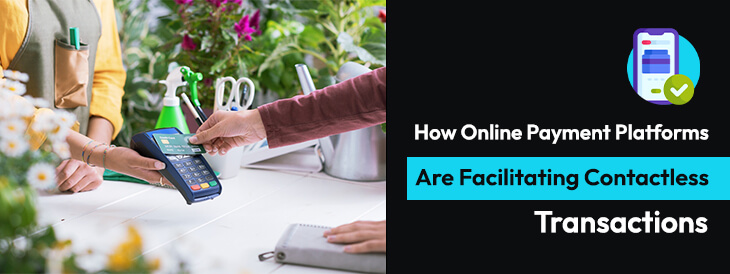How Online Payment Platforms Are Facilitating Contactless Transactions
How Online Payment Platforms Are Facilitating Contactless Transactions

1. The Evolution of Contactless Payments
Over the past decade, contactless payments have revolutionized the way consumers and businesses exchange value. Driven by advancements in technology and shifting consumer preferences—especially post-pandemic—contactless methods now account for over 60% of in-person transactions in markets like the U.S., UK, and Australia. This growth is fueled by the demand for speed, security, and hygiene, as consumers increasingly favor digital wallets, QR codes, and NFC-enabled taps over cash or physical cards.
Contactless payments leverage technologies such as Near Field Communication (NFC), Radio-Frequency Identification (RFID), and tokenization to enable secure, one-tap transactions. These innovations are reshaping industries ranging from retail and hospitality to public transportation, where speed and convenience are critical.
2. Key Benefits of Contactless Transactions
A. Enhanced Security
- Tokenization: Replaces sensitive card details with unique, one-time-use digital tokens.
- Biometric Authentication: Fingerprint or facial recognition via mobile wallets adds an extra layer of verification.
- End-to-End Encryption (E2EE): Protects data during transmission, rendering it useless to hackers.
B. Speed and Convenience
Transactions take under 15 seconds, reducing queues in stores and cart abandonment rates online. Mobile wallets like Apple Pay and Google Pay allow users to store multiple payment methods, streamlining checkout.
C. Global Accessibility
Modern platforms support multi-currency processing, enabling businesses to accept payments in USD, EUR, JPY, and more. Localized payment methods (e.g., Alipay in China, iDEAL in the Netherlands) further expand global reach.
D. Cost Efficiency
- Reduces cash-handling costs and manual reconciliation efforts.
- Automates recurring billing for subscription-based businesses.
Some Related Blogs
- How Online Payment Platforms Are Shaping Global E-commerce
- Comparing Online Payment Platforms: Fees, Features, and Usability
- How to Choose the Best Online Payment Platform for Your Ecommerce Store
- Top Online Payment Platforms for Small Businesses in 2025
3. Essential Features of Modern Payment Platforms
A. Omni channel Compatibility
Consumers expect seamless payment experiences across channels—in-store, online, and via mobile apps. Unified platforms sync inventory, sales data, and customer profiles to deliver consistency.
B. Subscription Management
Automated tools handle recurring billing, prorated charges, and dunning management (retrying failed payments).
C. Developer-Friendly APIs
Pre-built plugins for platforms like Shopify or WooCommerce simplify integration, while sandbox environments allow risk-free testing.
D. Advanced Fraud Prevention
AI-driven tools analyze transaction patterns to flag anomalies, such as sudden high-value orders or mismatched billing/shipping details.
E. Real-Time Analytics
Track metrics like chargeback ratios, approval rates, and customer lifetime value to optimize payment strategies.
4. Mobile Technology’s Role in Secure Payments
Smartphones have become central to the contactless revolution:
- Mobile Wallets: Enable tap-and-go payments and integrate loyalty programs.
- QR Codes: Popular in emerging markets for low-cost, secure transactions.
- In-App Payments: Ride-sharing and food delivery apps rely on embedded gateways for frictionless checkouts.
Biometric authentication (e.g., fingerprint scans) and tokenization ensure mobile transactions remain secure, even if a device is lost or stolen.
5. Future Trends in Contactless Commerce
A. Biometric Advancements
- Palm Vein Scanning: Used in checkout-free retail environments.
- Voice-Activated Payments: Smart speakers and AI assistants enable voice-based purchases.
B. Blockchain and Cryptocurrency
- Stable coins facilitate faster cross-border settlements.
- NFT-based rewards create unique customer experiences.
C. AI-Driven Personalization
- Predictive analytics suggest payment methods based on user behavior.
- Chat bots autonomously resolve disputes or process refunds.
D. Sustainability Initiatives
- Digital receipts reduce paper waste.
- Carbon footprint tracking integrated into payment platforms.
Conclusion
Contactless payments are no longer a novelty—they’re a necessity in today’s fast-paced, digital-first economy. By prioritizing security, speed, and scalability, modern payment platforms empower businesses to meet evolving consumer expectations while reducing operational costs. As technologies like AI, biometrics, and blockchain mature, the future of contactless commerce promises even greater innovation, inclusivity, and efficiency.
![]()
Email us anytime!
Email customer service 24/7 at info@binarygateways.com
![]()
Call us anytime!
Reach customer care 24/7 at (801) 761-5001
